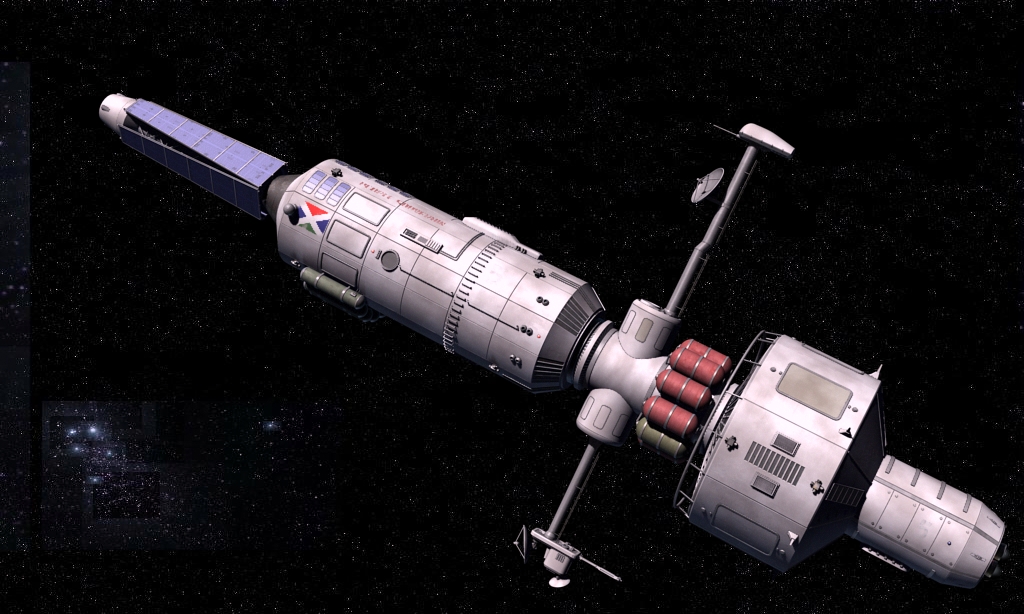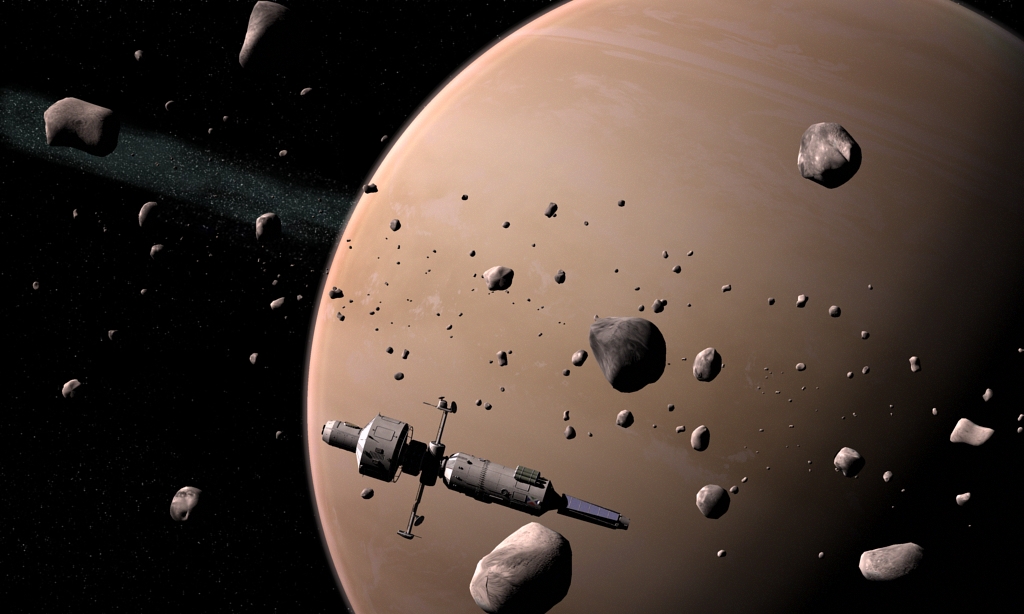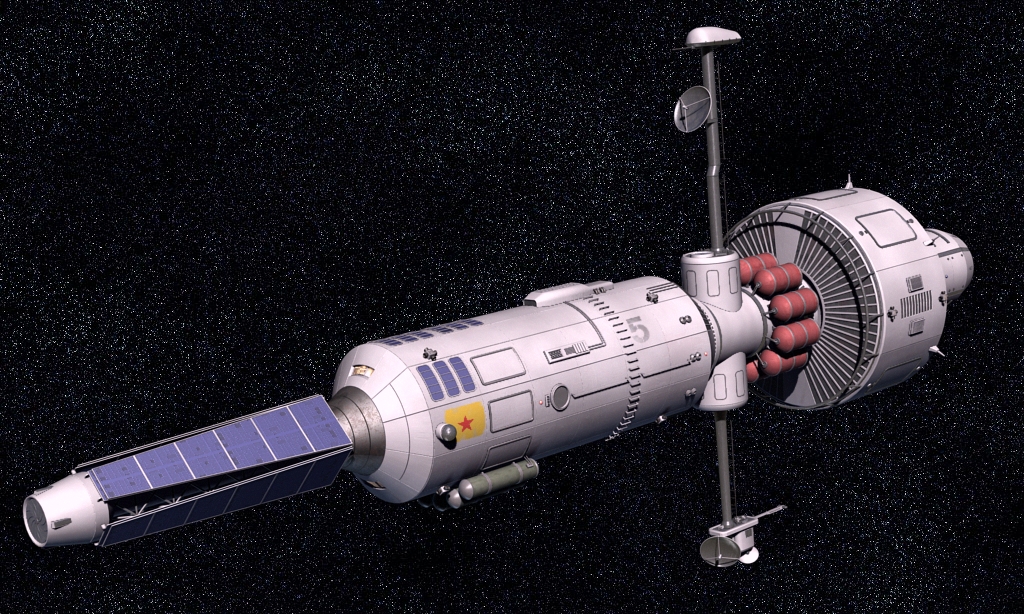Tunghu
Missile
Frigate
By
Laurent Esmiol and D Hebditch Introduction The Tunghu was designed from the off as a long range patrol ship with a substantial punch for operations along the Chinese Arm. The Tunghu was to be easily maintained, have excellent sensor and a sustained endurance. It was to rely on missiles for its armament and stealth instead of armour. The characteristics that would serve in well as a patrol ship would gain it infamy when deployed against ESA merchant ships on the French Arm and the western world the name Tunghu is synonymous with raider, privateer or pirate. Acknowledgements Artwork
is by Laurent Esmiol. Narrative
The
Minerva hung motionless on the fringes of Beta Comae Berenices’
asteroid belt her passive sensors carefully and repeatedly scanning
the system. The ship kept an especially close watch on the Kafer naval
base at Kronos and kept one ‘ear’ recording
the agony of the world of Nous Voila as it
took another of its periodic orbital bombardments. The
dangers were many for the Minerva, operating this close to the
belt was always risky, but at least it offered some concealment from
the occasional Kafer sweeps and the constant movement to and from the
base from the edge of the system. Minerva was not alone in this
duty, the fast courier Gauteng
was also present to carry away the vital data should they be discovered.
It was a hazardous duty but one being carried out on the edge of all
of the occupied systems. Minerva
was an unusual ship; an obsolete, surplus Manchurian frigate with an
eclectic European crew, Dutch owners and a French letter of marque.
She was far from her first flush of youth, in truth she was a tired
old ship, but she had a canny skipper and had proved herself several
times already. Most importantly she carried an array of the latest French
Ritage-2 missiles. The
duty was onerous and unglamorous but vital none the less. A single lapse
of concentration would doom her. |
|
Above: A Manchurian Tunghu, believed to be the Ilu, pictured on deployment from Han Shan en-route for the French Arm in 2283.
The
characteristics of the Tunghu design are:
-
Use of commonly available
hull materials for low cost, ease of manufacture and ease of repair.
-
Survivability through stand-off
armaments and long range sensors. -
Easy maintenance and smaller
crews to reduce running costs. -
Long patrol durations.
Hull
design The
hull is composed of five distinct parts -
The prow of the Tunghu is a lattice framework which supports the array of
solar panels which can power the ship on station almost indefinitely.
-
The bow section is to the
rear of the prow and includes all of the ship’s command systems, the
bridge, TAC and computer sections. The ship’s
missiles are slung externally under this section. It also includes the
ships crew accommodation. - The centre of the ship supports the sensor booms and external fuel tankage. - The internal fuel tanks and cargo hold. -
The stern of the ship is
given over to the engineering section.
Overall
dimensions: -
Length: 52m + prow 10m. -
Tonnage: 1440 tonnes Armament The
armament of the Tunghu is based around the
Glowworm missile family and two lasers systems
as a rudimentary point defence and for close combat which the Tunghu is not designed to survive. New missiles are relatively
easy to fit. -
2 x MSA
Type 3 laser weapons mounted in two masked turrets. -
6 x
Glowworm carried in two external bays under the bow section. Electronics Sensor
systems are provided by MSES. These are the raison d’ętre
of the Tunghu and have been frequently upgraded.
-
Active with 1 work station:
-
Type 57. (Active: 13) -
Passive with 1 work stations: -
Type 65 (Passive: 10) -
Standard Navigation systems,
Gravitational sensors, Deep system scanners. Engineering
Systems - Power Plant: MSPS 4Mw MHD turbine -
MSPS
Solar Power System. -
Drive: MSPS 550 Old Military 4MW stutterwarp drive. Crew The
Tunghu has a total of 27 crew: -
10 in bridge. -
8 in TAC -
3 in engineering. -
5 security. -
1 in medical bay. Living conditions on the Tunghu are roomy but hampered by the lack of a spin habitat. Instead the crew have hamster cages to sleep in, the ‘tumble dryers’ are essential for long duration operations but are certainly uncomfortable. The Tunghu crews dispatched on long duration raids to the French Arm often suffered serious medical complications. It was partly this reason that saw the opening of the base at Grosshiddenshafen.
|
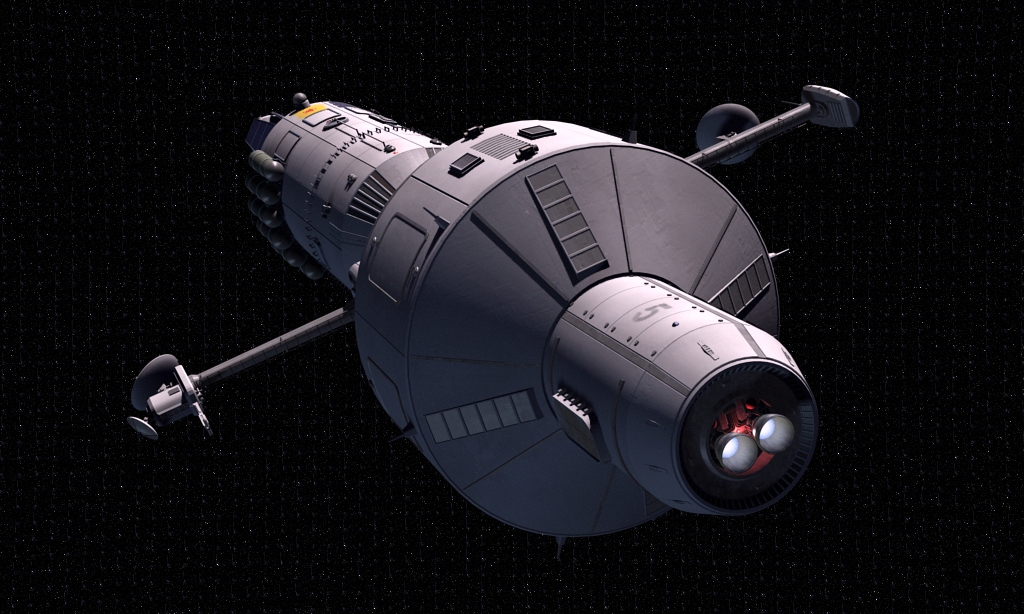
|
Above: Another shot of the Ilu at Han Shan. These pictures were released by the Manchurians as part of a media ops offensive against the Allies. Some MSIF analysts believe this ship was renamed as the Peuple Souverain and became part of the Elysian FSE.
Tunghu Warp
Efficiency: 2.11 Life
Support: 90 days (32 personnel), Comfort: 0, Price:
23.65 Mlv. Ship Status Sheet
Hits Bridge:
Captain, Helm, Navigator, Communications, Engineering, Computer. TAC: Active Sensors, 2xPassive Sensors, 6xFire Control,
3xRemote Operators Hull
Hits: 37/19/9 Power
Plant Hits: 11/2 Damage
Control: ? Armament 6
Glowworm Missiles |
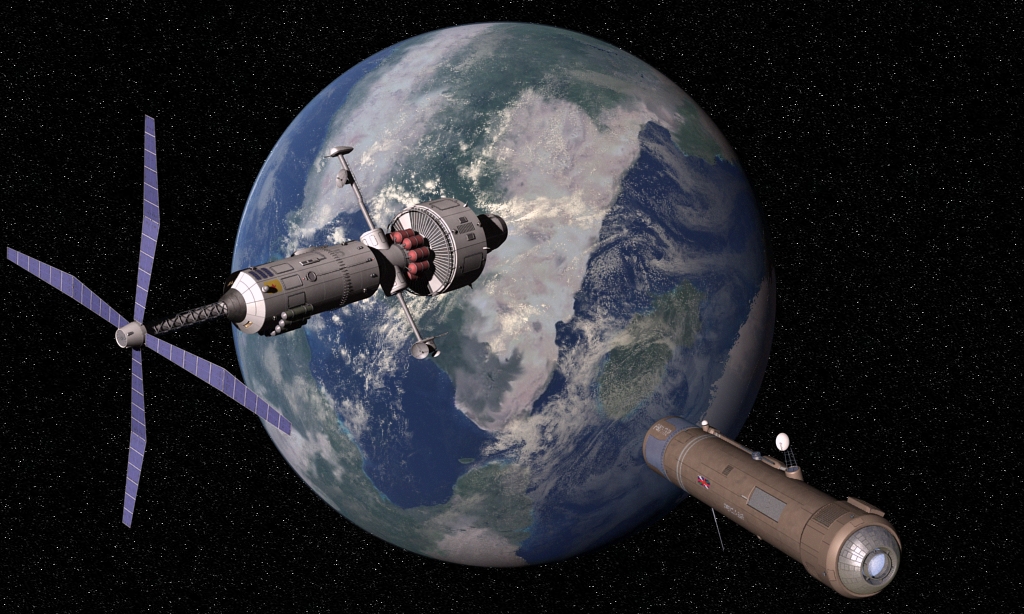
|
Above: The Jurchen, later the Liberté, in orbit above Joi with solar array deployed following the 1st Battle of Joi in 2286. The Manchurians were able to decoy superior French forces away from a, somewhat indiscriminate, orbital arms drop to the Elysian rebels. (Joi texture by Jonathan Pearson.)
Manchuria Manchuria has never openly revealed how many Tunghus she has actually produced. As well as those that came out of the yards above Earth it is known that other Tunghus have been built about Manchurian worlds on the Chinese Arm especially Han Shan. Many of these were put together from prefabricated kits brought out from Earth. For the first thirty years of service the Tunghus performed their planned patrol role roaming deep into the Chinese Arm and escorting convoys. Thanks to the Tunghus the Manchurians gained an excellent idea of what was happening on the Arm and suppressed virtually all piracy aimed at their ships. Service on the Tunghus was not glamorous by any means and was often uncomfortable. However their commanders gained great experience in independent operations denied to the main force of the Manchurian fleet. The crews of the Tunghus were regarded as being somewhat apart from the fleet, however many of the skippers went successfully on to higher command. By the end of the 2270s the Manchurians began mothballing many of their Tunghus. More advanced Lungchen frigates were just being introduced and the older Tunghus were stood down and their crews transferred to newer ships. Unlike many nations Manchuria didn’t scrap these ships but instead put them into reserve just in case. The Central Asian War broke out and saw Manchuria put at a severe disadvantage thanks to the superiority of the French MSF. Manchuria’s main force was forced into the Chinese Arm and French raiders roamed the systems with something approaching impunity. The Tunghus and other ships often tracked French warships but simply had no answer to ships like the powerful Suffren. However the Manchurians were not going to let the French have everything their own way. In 2273 they launched the ‘Neubayern Raid’ deploying the Tunghu and Ilu into the French Arm to prey on French shipping. The two slipped through the core systems and out to Neubayern without being detected and began to pick off isolated French and Bavarian shipping. They were very successful stopping two merchants and forcing them to jettison their cargo which was subsequently lasered by the Manchurians. It was an oddly chivalric start to what was to become a vicious campaign. The two Tunghus later intercepted the first escorted convoy out of the system, and were unable to stop it but damaged the Bavarian frigate Kassel. Even before the success of the Neubayern Raid was known the Manchurians had dispatched a further pair of Tunghus to the French Arm. Hard pressed as they were they feared to send more capable warships on what the main fleet HQ saw as only harassment missions. In addition several of the mothballed Tunghus were prepared for action, trained Manchurian manpower was scarce so privateer crews were recruited under Manchurian skippers. Ultimately the Manchurians had more than eight Tunghus operating on the French Arm by 2274, supported first by merchant Q-ships and later from the secret base at Grosshiddenhafen allegedly shown to the Manchurians by Bavarian traitors. The Tunghus had to attack merchants with much more ferocity now that escorts were about and several neutral ships were hit in ambushes. This prompted the formation of the Neutrality Patrol by nations not openly involved in the CAW. The Tunghus were certainly causing difficulties for the Allies out of all proportion to their numbers and were later reinforced with more capable units although they were never able effect the course of the war on Earth they took some pressure away from the Chinese Arm. During the war several of the Tunghus with privateer crews transferred to the colony of Elysia or ceased taking military orders. These ships caused no little trouble on the arm. The remaining Tunghus returned to the Manchurian fleet, where many were rebuilt or mothballed once more. During the War of German Reunification unmarked Tunghu privateers once again arrived in the French Arm and attacked primarily French ship. Although Manchuria denied it many believe that this was payback for the CAW. The Kafer War has caught Manchuria at something of a loss at what to do. Seeing the French and other Europeans in difficulties has proved hugely satisfying, however the vast number of casualties and ultimate threat the Kafers pose has caused them great worry. However the dispatch of Manchurian fleet units was resisted by the establishment. Instead a number of Tunghus were reconditioned and offered to the French Arm nations as privateers an offer than was taken up with four being commissioned. Later as news of the invasion reached Earth a further four Tunghus were dispatched with Manchurian crews to nominally aid the Elysians. These ships, known as the 'four dragons' didn’t reach Joi and instead have operated being Kafer lines in combination with Rochemont and Graham and provided vital links between the fleets. Trust was difficult at first but cooperation has steadily grown. In
addition to these a number of Tunghus still
operate as patrol ships on the Chinese Arm. In total it is thought that
16 Tunghus are still in service, the number
in mothballs above Han Shan is unknown. Indonesia Indonesia has no colonies, but a number of mining outposts and merchants ships that ply the arms. Indonesia had no need of a major fleet, but felt the need for a space force that could accompany merchants or provide protection for the mines. The obvious design for this role was the Tunghu, and the Indonesians acquired a batch of six of these from the Manchurians. These ships were heavily used and their crews, initially trained by the Manchurians were very long serving. Along the Chinese Arm rumours began that the Indonesian ships were not behaving entirely legally on occasions and were demanding protection money from merchants and liaising with suspected pilots. When the Indonesians investigated and sent another pair of ships onto the Chinese Arm the original ships had disappeared, taking up piracy openly. These ships were never hunted down by the Indonesians, but one was later destroyed by the Manchurians. The
Indonesians later built a further four reverse-engineered Tunghus,
much to the annoyance of the Manchurians who received no licence payments.
It is rumoured that the Indonesians have built more of these ships for
private buyers, although Indonesia says this is merely black propaganda.
Most merchants are extremely wary around Indonesian ships. Elysia
The Force Spatiale d’Elysia gained its first warships during its war of independence from France as a gift from the Manchurians. In fact these ships were privateers with Manchurian captains and nominally obeying Elysian orders, although in reality they were operating to Manchurian strategic directives. After the war two Liberté and Peuple Souverain were transferred permanently to the FSE. These
ships had been involved in numerous contacts during the war of independence,
once notably running rings around a French cruiser thanks to some excellently
planned deceptions. After the war they continued to be under only loose
political control and there was some concern about their activities
and they received the nickname of the Les Indonésiens-Français. During
the Kafer War the FSE operated in cooperation with Rochemont’s Fleet performing
valuable piquet and courier work and some little acknowledged raiding
of Kafer transports. Privateers There
are currently known to be seven Tunghus operating
as privateers, or outright privates. There is one unaccounted ex-Indonesian
Tunghu still operating on the Chinese Arm.
Two Manchurian privateers from the Central Asian War are still believed
to be present on the French Arm. There are four newly released surplus
Tunghus operating on the French Arm against the Kafers under
ESA letters of marque. |
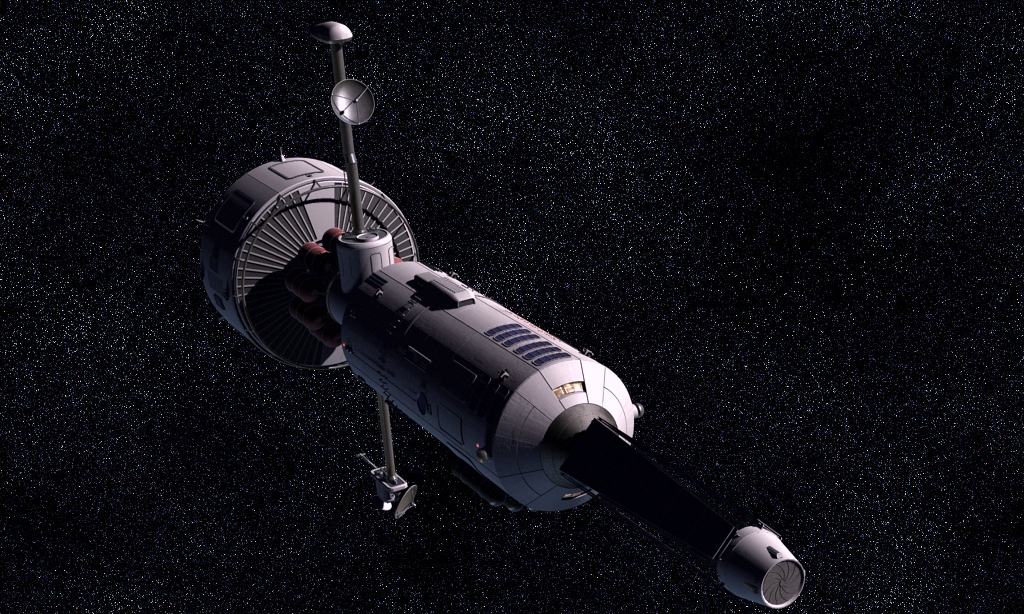
|
Above: The Peuple Souverain on operations in early 2301 in support of Rochemont's Fleet. The canny FSE ships proved their value as piquet ships and raiders.
Appendix
1 – Design Notes The
canon design for the Tunghu is broken. I have
tried to design a ship with the same stats and a global shape following
the small canon profile.
I
was surprised to obtain a ship nearly as long as a CESAD. In effect, the fuel tanks, mid sized hold for such
a ship (interesting thing for a ‘privateer/pirate’) and a 0g habitat
need a large volume. The increase of the length of the stern section
with a 12m diameter may have shortened the bow for a more balanced design. Finally,
with an endurance of two weeks at full power, the ship is not a very
good raider. Chasing tunghu with fusion powered
cruisers is not dangerous but not particularly cost efficient. |

